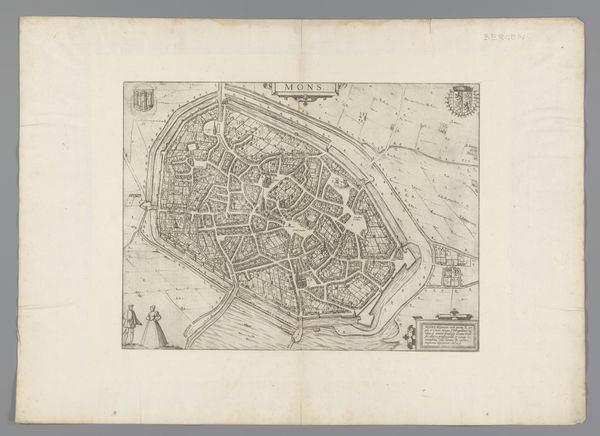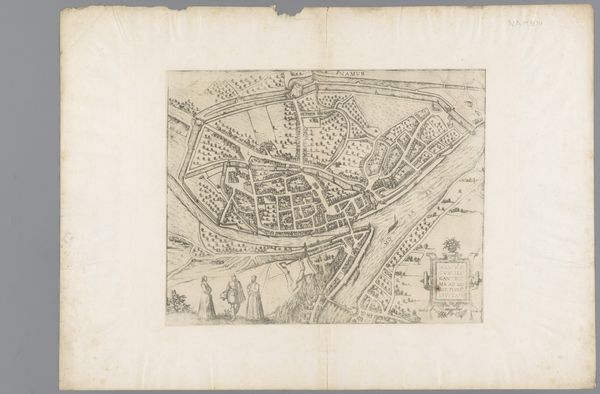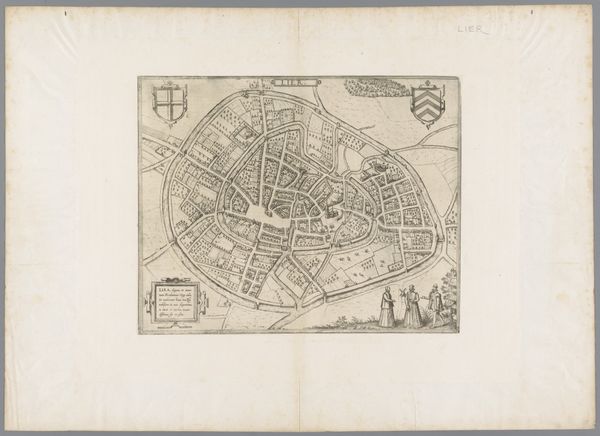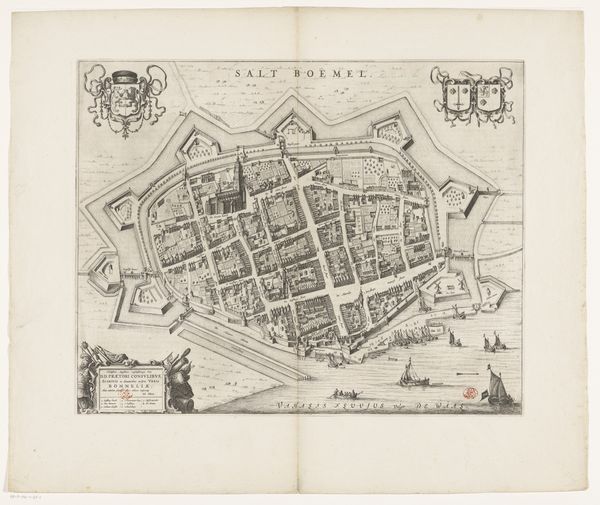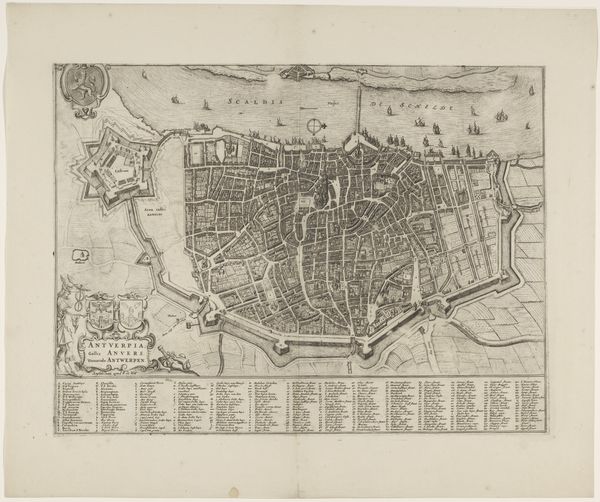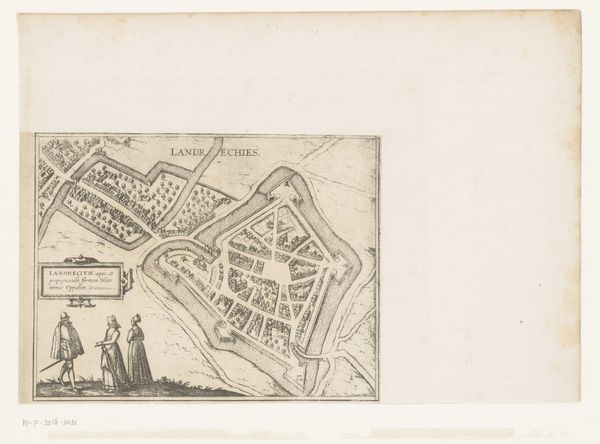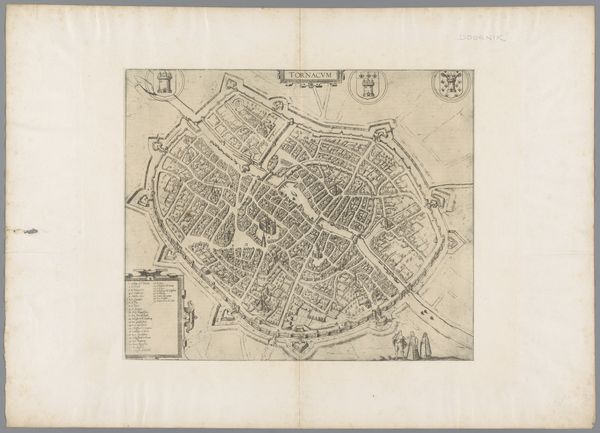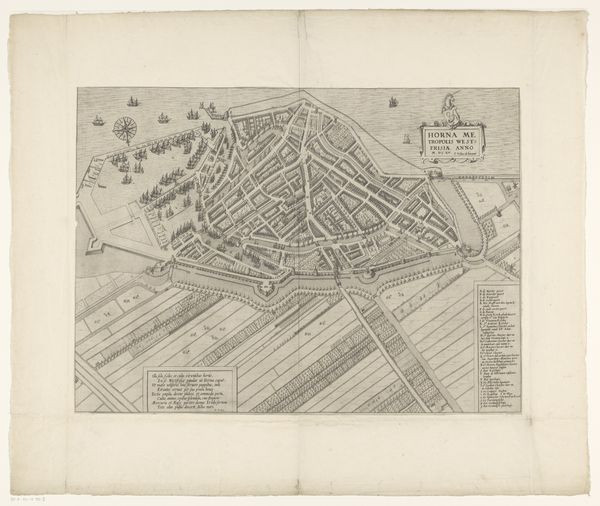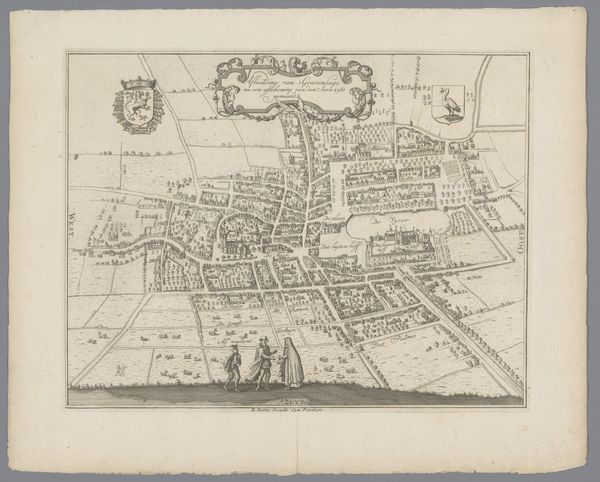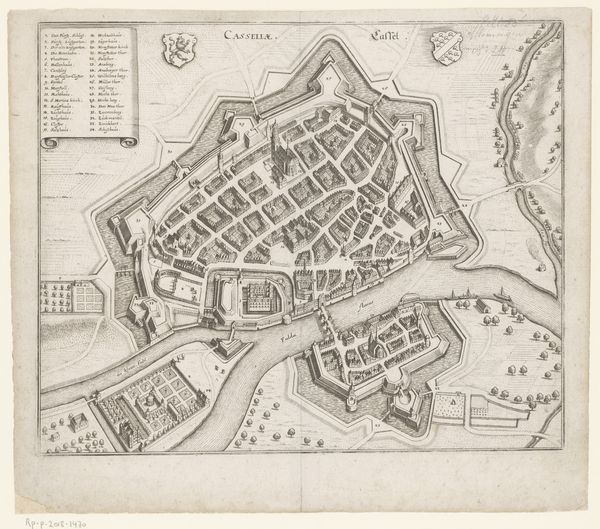
print, engraving
#
medieval
# print
#
landscape
#
geometric
#
line
#
cityscape
#
engraving
Dimensions: height 335 mm, width 429 mm
Copyright: Rijks Museum: Open Domain
Curator: Here we have "Plattegrond van Aalst," a 1588 engraving by Frans Hogenberg, now held in the Rijksmuseum. What are your immediate thoughts on this cityscape? Editor: The immediate impression is one of geometric harmony. It feels almost… visionary. I find it soothing, despite the rigorous lines. Is that strange? Curator: Not at all. Look closely at how Hogenberg employed linear techniques to depict Aalst. Consider how the materiality of the print, the engraved lines, creates not just a visual representation, but also a sense of the built environment's planning and construction. Editor: It's not just streets; it's the *idea* of streets. Do you think he captures something of its soul in those meticulous lines? I wonder what the townspeople thought of it, seeing their lives mapped out so starkly. Curator: It would be crucial for military and administrative purposes, a tangible representation of power. Maps were increasingly important, showcasing trade, defense, and territorial control. Hogenberg would've also understood the power this lends. He highlights its social organization by extension. Editor: Mmm, I suppose there's also that cool emblem he added; it appears above some very ornate lettering and ornamentation, all contained inside an intricate border, like its own separate drawing! Does the lettering share insight as to the intended purpose, or social commentary regarding the content of this particular print? Curator: Ah! The inscription sheds light, confirming it was made to illustrate the city and also provide context regarding events related to wars of that period. This relates the creation and the work of cartographers, printers, distributors, and consumers involved, embedding itself in a wider network of information dissemination during times of conflict. Editor: In conclusion, "Plattegrond van Aalst" shows both an accurate representation and its capacity to be emotionally evocative despite the subject being non-figurative. Curator: And it shows us how even an object created for apparently practical and functional ends embeds layers upon layers of historical and material considerations.
Comments
No comments
Be the first to comment and join the conversation on the ultimate creative platform.

